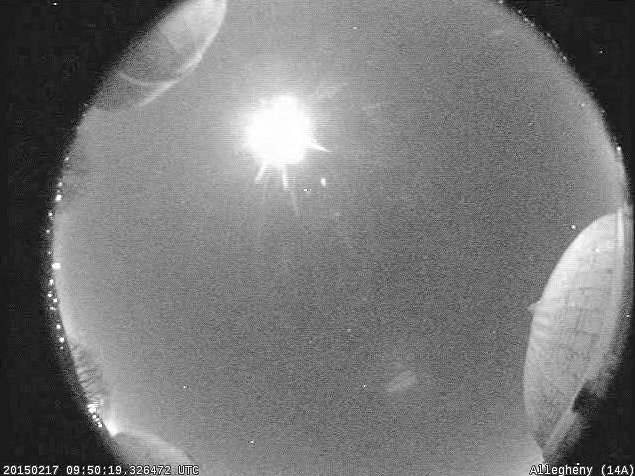‘A ring of fire’
NASA says meteor struck Pittsburgh on New Year’s Day
On Jan. 1, a meteor was seen on satellites over New York, Pennsylvania and Ohio.
On Jan. 1, or as many people know to be New Year’s Day, Pittsburgh had a booming sound come over the city and surrounding counties. The rattling noise turned out to be more than just a boom or a sound of thunder. It was reported to be a meteor that exploded over Pittsburgh.
The meteor had hit the city around 11:30 a.m. The meteor was estimated to have as much energy as 30 tons of Trinitrotoluene (TNT). When the boom had exploded over the atmosphere of the city, people had reported shakiness in their homes and felt their windows rattle. There were even reports from Ohio and West Virginia about the meteor strike as well.
According to the National Aeronautics and Space Administration (NASA), the meteor was three feet in its diameter and 1,000 pounds. It also was traveling around 45,000 mph when it had struck the Earth. Many people would describe a meteor to be like a giant ball of fire. A meteor is a small body of matter from outer space that enters the earth’s atmosphere, becoming incandescent as a result of friction, and appearing as a streak of light. They can fall like rocks and not do any damage, but a meteor can do a lot more damage than people think. They can be big enough to fall through the roof of a house or building. They can even shatter car windshields as well.
NASA had also reported that the meteor blast was about 100 times brighter than the sun. Allegheny County received 911 reports of loud booms and their houses shaking. A lot of the reports came from the town of South Hills just south of Pittsburgh. People had described the vibration feeling to resemble fireworks, and one resident said they could feel the boom and rumbles in their chest. New Year’s Day in Pittsburgh was a very cloudy and rainy day. Another question many people had was the boom and rumbling an earthquake? The answer is no, earthquakes in Pennsylvania are uncommon. The air that day in the area was also gentle and not rough so there wasn’t a possibility of it being a storm.
As of now, a meteor explosion is what NASA and meteorologists believe to have occurred on the morning of Jan. 1, New Year’s Day.



